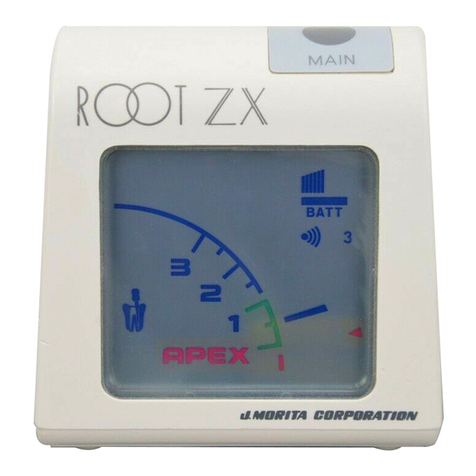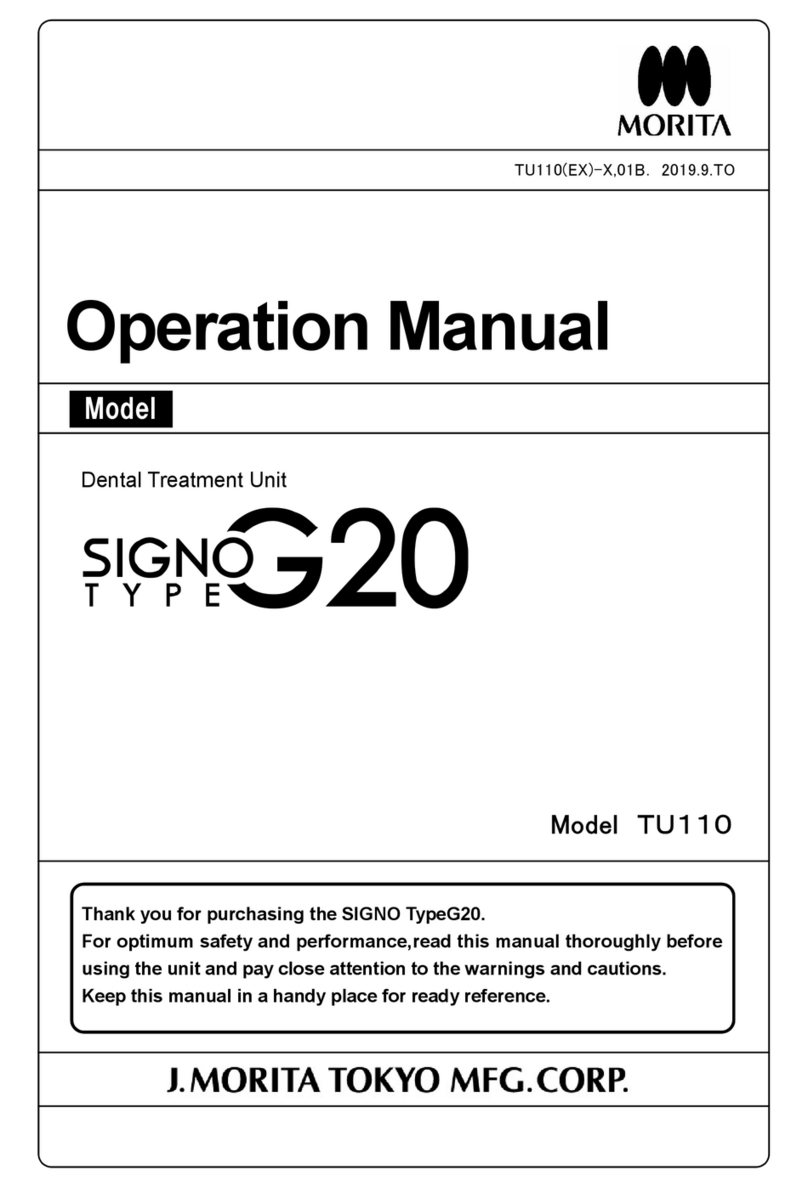
Instructions for Use 2018-04-23
2) When entering the operation area of this equipment, always put on the protective goggles. Furthermore,
never allow the laser beam to shine directly on the eyes even if Laser Safety Glasses are worn.
3) Regularly inspect the protective goggles to make sure there are no holes or fine cracks and make sure that
they are physically sound.
4) Before using this equipment, the user must undergo a dermatology and ophthalmology examinations.
Moreover, the user must undergo regular dermatology and ophthalmology examinations.
5) Due to the harmful effects laser beam emission can have on eyes and skin, it is necessary to undergo an
ophthalmology and dermatology examinations. There are 2 reasons for this.
1. To ascertain the state of the skin and eyes before performing laser beam emission.
2. To detect damage to eyes or skin at an early stage.
6) If the user has suspected damage to eyes or skin, they must be examined by a doctor as soon as possible.
(2) Safety measures to protect the patient
The doctor must explain to the patient all crucial points regarding treatment involving the laser surgery
equipment.
When using the laser surgery equipment, no matter what the circumstances, the doctor must always have the
patient wear Laser Safety Glasses to protect the patient’s eyes. The patient must follow the directions of the
doctor.
Do not touch any terminals of the equipment and the patient at the same time.
(3) Safety measures to protect people other than the user and the patient (observers etc)
1) The user must prohibit people other than the user and the patient from being in the area where the laser
surgery equipment is used. If it is necessary to allow a person to enter the operation area, it should be
limited to cases where the person is undertaking instruction and training.
When the user is using the laser surgery equipment, a notice stating laser surgery is in progress should be
placed where all people visiting the area will notice it such as outside the entrance of the laser surgery
room.
2) Only people recognized as authorized users may operate the equipment.
3) The user of this equipment must have complete proficiency in the operational procedures of the
equipment.
4) The user must have received comprehensive instruction and training on the hazards of laser beams.
5) Any dentists, doctors, nurses or dental hygienists who might have to enter the operation area of the
equipment must receive a comprehensive explanation on the hazards of laser beams.
6) The user of this equipment must never direct the laser beam to reflective surfaces or people other than the
patient being treated.
7) The key of the equipment’s key switch must be taken care of and kept by the person assigned that task
and when the equipment is not in use, the key must always be removed from the equipment.
8) Wear only Laser Safety Glasses that have been regularly inspected.
(4) Prevention of Laser Beam Reflection off other Equipments and Equipment
As far as possible, remove all reflective equipments from the treatment area.
Take reflection protection measures by covering items that could reflect a laser beam such as surgical
equipments and equipment with wet gauze or some other suitable material.
Look out for the possibility of the laser beam being reflected by metal objects and use surgical equipments
that have undergone processing to eliminate reflectivity.
This laser beam is dangerous to eyes, skin, mucous membranes etc. even when reflect from a diffusing
surface.
Ensure the measures to eliminate the hazard of reflected light outlined below are comprehensively followed.
1) Make sure the surgical equipments and equipment such as forceps and suction tubes have undergone
processing to prevent reflection and take all possible measures to reduce the chance of laser rays being
reflected.
2) Never perform laser beam emission on a reflective surface.
3) Take care to prevent reflection by dental prosthetics etc.
4) No one should stand behind the patient or laser surgeon.
5) When using a surgical equipment that has not undergone processing to prevent reflection, cover it with
gauze soaked with physiological saline.





























